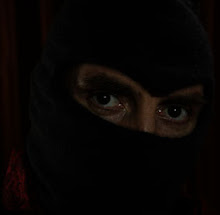

The bloodier photograph contains two dilemmas:
1. In some ways photography can demean private or restricted events, like in the case of this stab victim being loaded into an ambulance, on film. The viewer can become trapped in a corner when the subject looks at him or her and, in a sense, frames another act of violence. How dare you look at me?
In this case the victim is so high that although his line of sight pins me(and you), he registers nothing. The vision in his mind's eye of us kneeling at the back of the ambulance and pushing the shutter must never really have been anything more than a passing semblance in a whisp of crystal meth smoke.
2. Stephen Shore told me that in his seminal work entitled, Uncommon Places, there is no red. He has tried to denude all his photos of the colour red. He believes that the gamut of photography and print cannot sufficiently render shades of red ie. All red is the same in photographic prints despite them being varied. Red is dead. This photograph is a prime example of red is dead.
The cross on the ambulance driver's lapel is also red. Maybe the hospital services knew this when they made their Red Cross(I know they didn't, grant me poetic license), and made it so that they task would always be given immense gravity when they were depicted with the bloodied.
The same can't be said for sky blue.
The other photograph is from the same job which involved photographing a night on an ambulance in the rough Coloured areas of Cape Town. The Medic is checking the depth of a stab wound, seeing if it's pierced the lung.
I think this photograph is effective because the man's penetration of the seated's chest is much how seeing a photograph of violence can stab into our experience or not, for that matter.
This was a tragic SA scene. Everyone in the cramped house was drunk or stoned on something. Kids, folks, grannies and grandpas. Only the two innocent kids staring down from the framed photograph were exempt in that time.

No comments:
Post a Comment